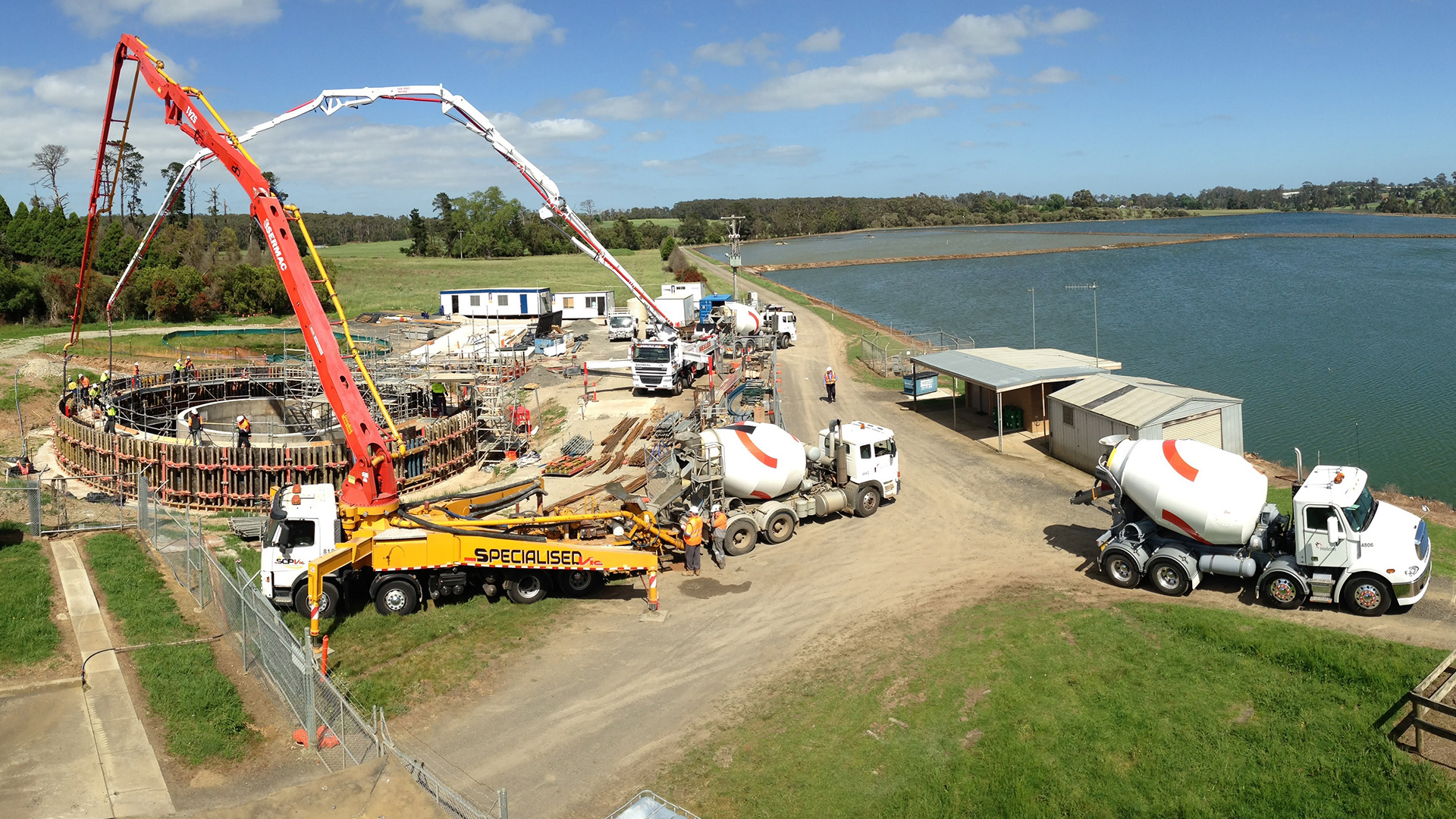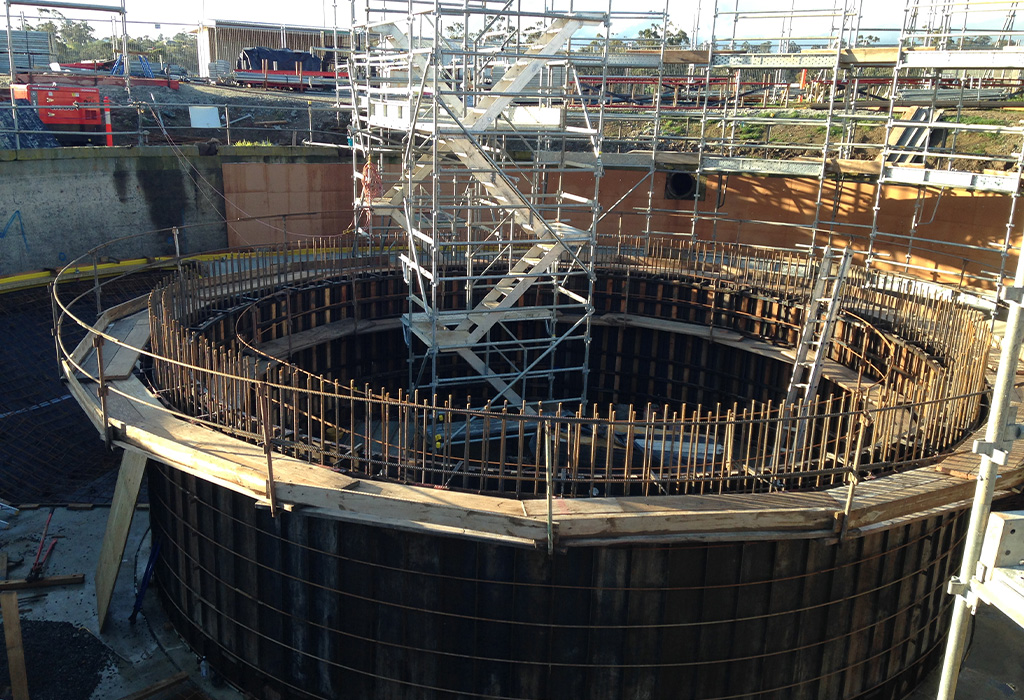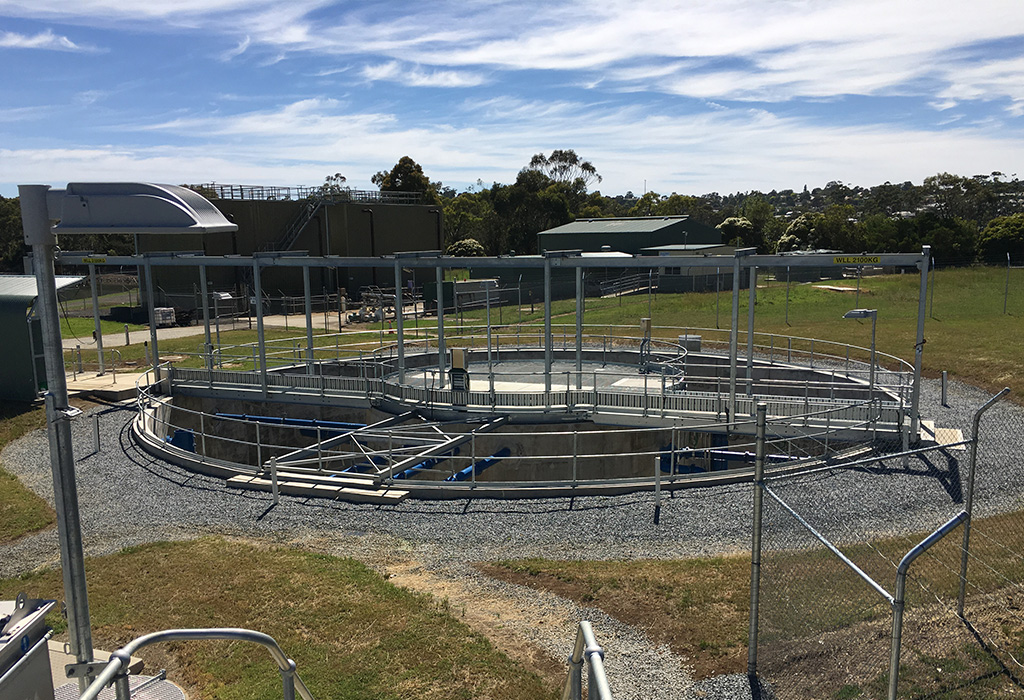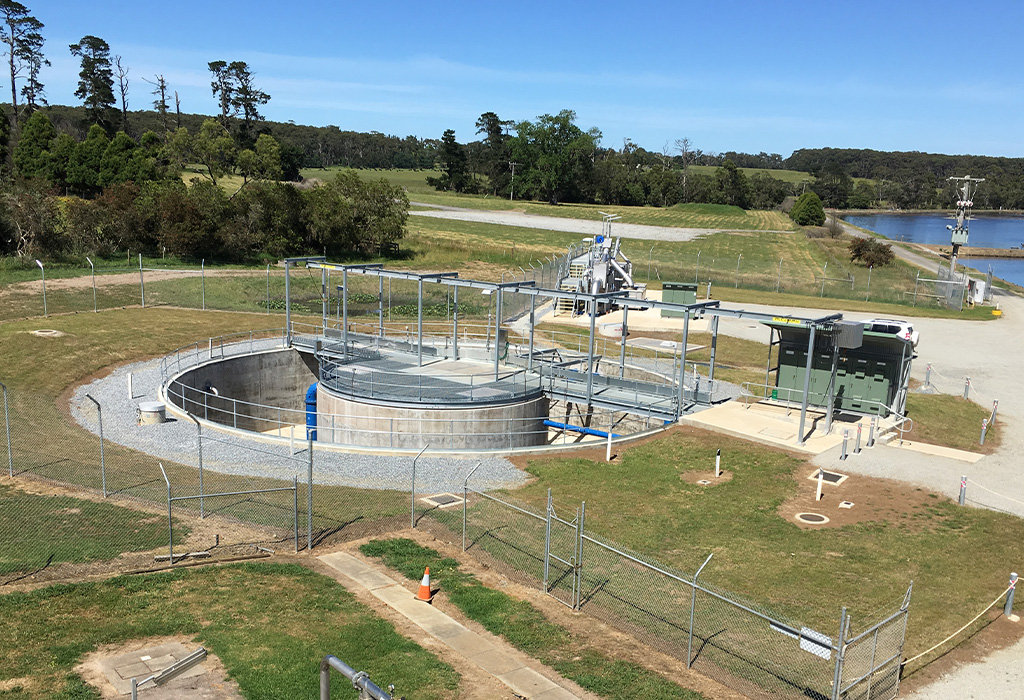
Drouin Wastewater Treatment Plant Inlet Upgrade
Drouin Wastewater Treatment Plant Inlet Upgrade
Drouin, Vic
Project Duration
April 2015 to January 2016
Client
Gippsland Water
Project Value
$ 2.5m
The Drouin WWTP Inlet Works Upgrade was urgently required as the population growth within Drouin meant the existing lagoon-based treatment plant system struggled to maintain compliance with EPA standards. Works were required to ensure Gippsland Water maintained compliance with EPA licensing in regards to both odour and discharged effluent quality.
Jaydo was contracted for Stage 1 of the Drouin WWTP Inlet works, with the scope of works
comprising:
Demolition Works
- Demolition and removal of existing steelwork, pipework, fittings, and redundant cabling from within aeration tank
- Saw cutting of existing tank floor and supports, followed by removal of concrete for installation of new tank footings, pump sump and wet weather reliever pipeline
Civil Site Works
- Installation of slabs for inlet screen and grit removal system
- Construction of inlet tank and a 22m diam x 8m deep Wet Weather Reliever (WWR) tank,
including all reinforcing, hydracorr, coatings, dowels, sealants, wall penetrations and baffle wall - Valve pit and associated pipework, thrust blocks and supports
- Installation of electromagnetic flowmeter
- Construction of 3x DN1500 maintenance holes
- Supply, fabricate and erect all hot dipped galvanized structural steel work, including steelwork such as handrails, stairs and platform
- Installation of 5x flygt pumps, 2 tonne electric hoist and trolley
- All required DICL inlet, overflow, outlet and dropper pipework
key challenges
- Working within the existing operational treatment plant provided a key challenge throughout the project, requiring consistent project management and communication to ensure minimal disruption to operations
- The design of a complex formwork system proved challenging with construction required against the outer walls of the existing tank. This was successfully undertaken without compromising the structural integrity of the existing tank walls



